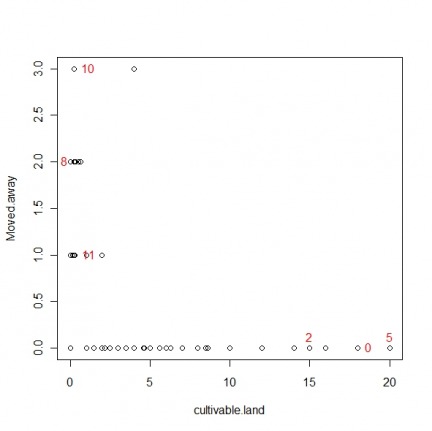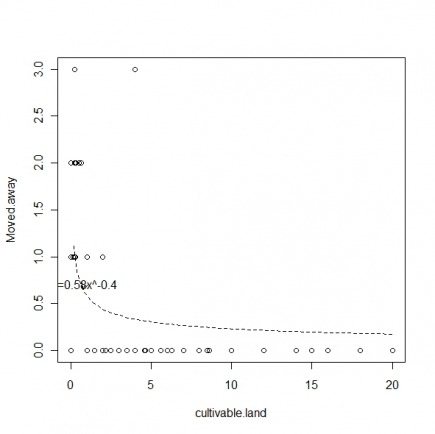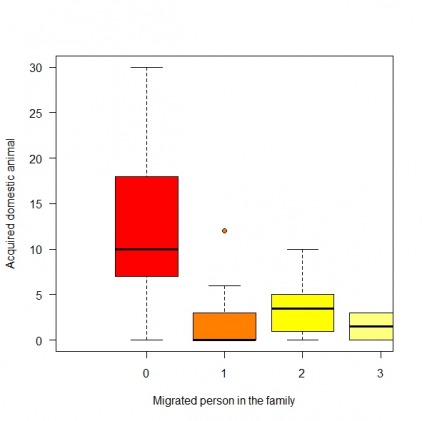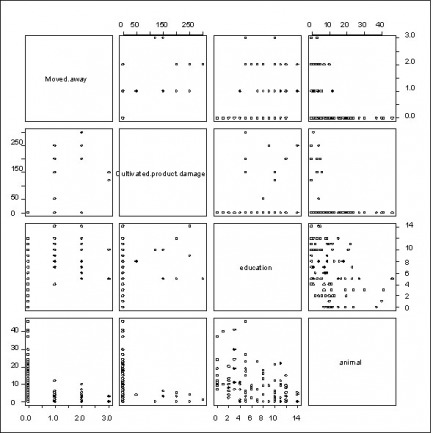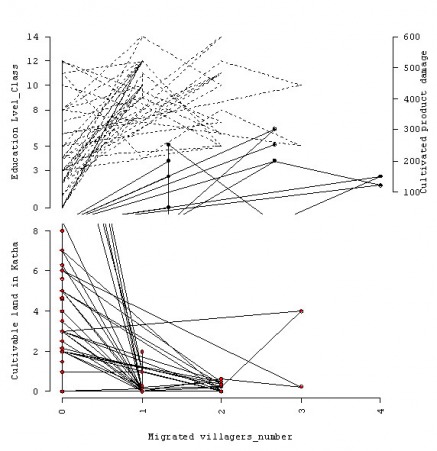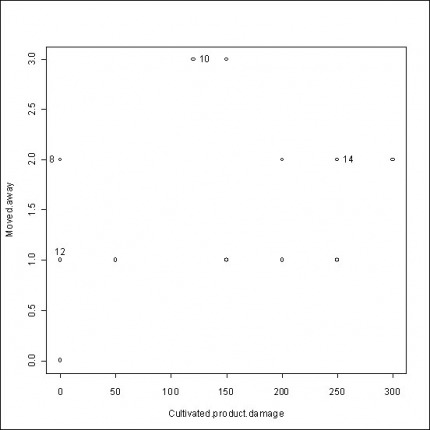Graphical Data exploration:
The data for this study came from the Chitwan Valley Family Study and Population and Environment Study collected from 1805 households (1475 farming households) in 1996. I took 100 household as my sample analysis. In my sample analysis, i used dependent variable as villagers as migrant individual those who are away from their house. Other households are considered as non-migrant households.
In this study, I conceptualize relative deprivation that related to limited access to cultivable land. Since based on agricultural setting in any developing country, access to cultivable land is one of the important sources of household income. As there is a close relationship between income and farm size (cultivable land owned by the household), acquiring to cultivable land is the important factors to determine household income. Including this, an individual graded
into different levels of the socio-economic hierarchy in the society based on ownership of cultivated land and access to it. Therefore, I considered ownership to agricultural production resources, particularly the size of cultivable land, to be one of the important measures of relative deprivation for this study. I hypothesize that individuals migrate due to relative ‘land’ deprivation because of differential access to cultivated land in an agricultural society.
Migration decision is not made solely by individual household rather than driven to maximize income as well as to minimize risks at individual household level. The risks might be related to crop insurance, unemployment, market opportunities, village politics and so on. A positive association between the education level of individual and migration decision. Acquiring at a significant level of education, household have the ability to maximize income
opportunity and by reducing some uncertainty. This indicates that even at the lower level of the asset deprivation hierarchy, individuals with relatively higher education and standard socio-economic conditions are more likely to move urban areas for their betterment of life. In contrast, households that have decided on livestock cultivation (owned domestic animal), are less likely to send individuals away for work. The negative relationship between owned animal and migration decision for work indicates that individuals from households engaged in livestock farming business might have decided to stay at home.
In an agricultural based economy, where poor residents lack access to resources and there is a high level of inequality and an inequitable distribution of assets, non-farm labor becomes an important source of income for the poor. For this, they are trying to find better earning opportunities in another place to feed their family. In the above graph, those who had a damage on their cultivable product due to drought and lack of irrigation facility, they are more likely to migrate in another place probably for their better living and these people have efficient level of education. At the same way in 2nd graph, those who have more cultivable land are more willing to stay in their home land instead of migrating to another place.
From above graph, those who have higher education level but the have some distortion in their cultivable product damages they are more likely to migrate to another place. Since they have sufficient education they might think that if they migrate to another place they can survive and recover the present situation.
Disclaimer: This is a class exercise based on modified or randomly generated data set.

